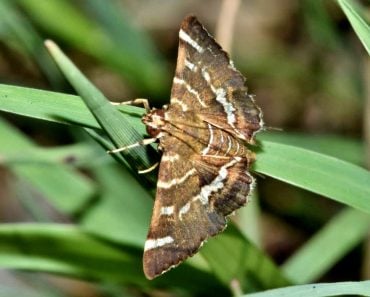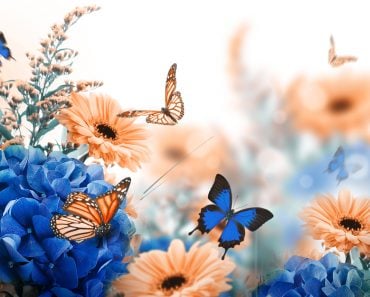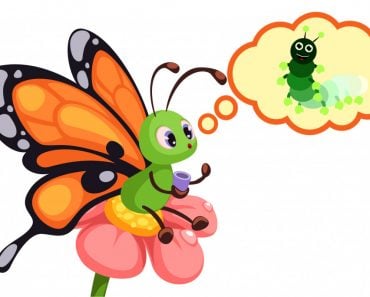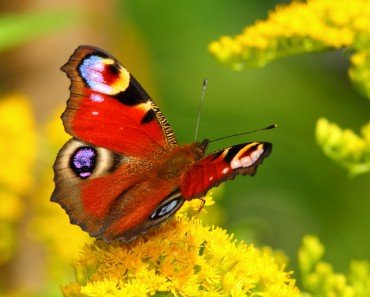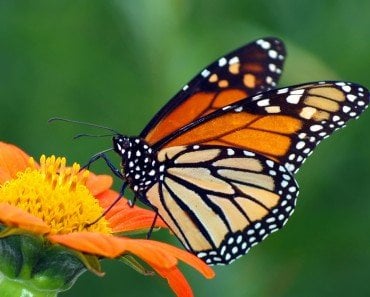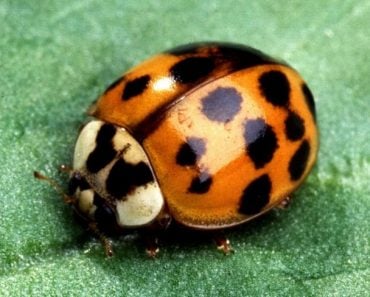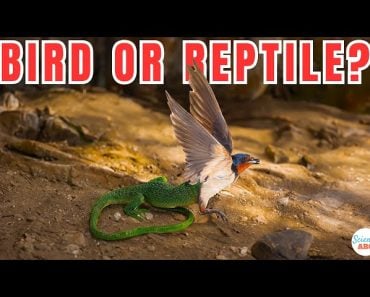Table of Contents (click to expand)
Butterflies and moths differ in colour, physical appearance, acitivity, wing structure, and pupae.
When I was in school, our teachers would take us on many nature walks. During these walks, we would cover the length and breaths of our campus, which was basically a forest. We would see birds, turtles, lizards, frogs, and beetles, but amongst them all, the butterflies dazzled us youngsters the most. They would be of all sizes, from small to large, and in every color of the rainbow.
On one such walk, I remember stumbling upon a particular butterfly that was resting on a leaf. It was light green with a tinge of white and was about the size of my palm. I vividly recall standing there thinking, “How peaceful and graceful this butterfly is, even while it’s resting!” It was the most beautiful creature I had ever seen.
I sprinted to my environmental science teacher, who was quite the expert in butterflies, and pestered her to identify it for me. She surprised me by saying, “This isn’t a butterfly, it’s a moon moth.”
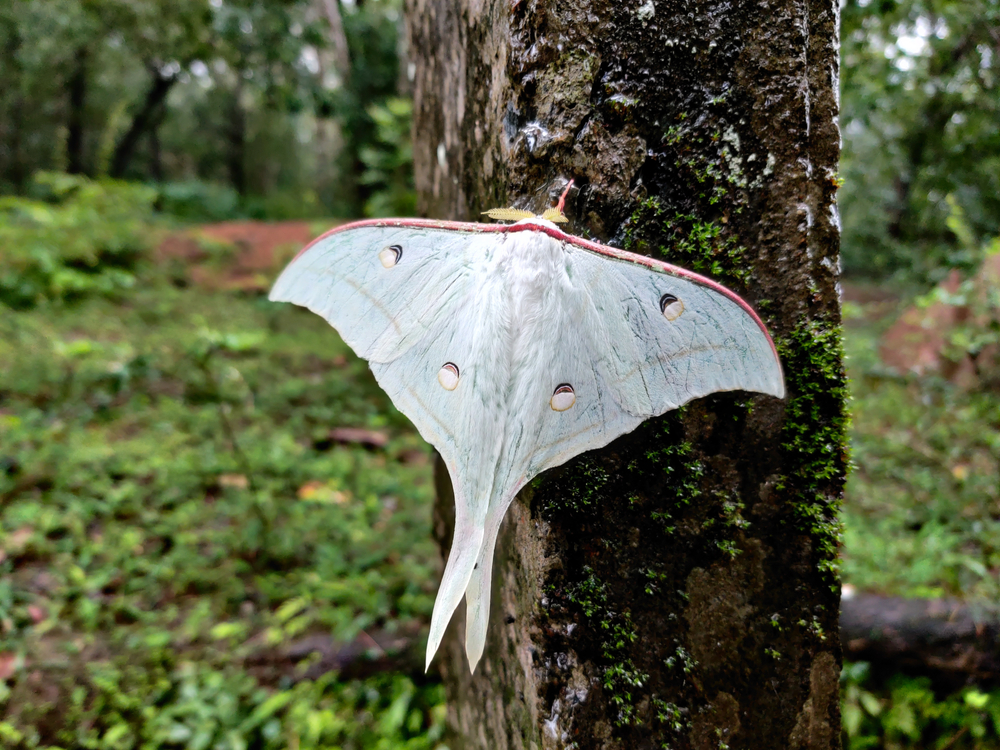
Now, as a young school student, I was perplexed. How could this insect be a moth when it looked just like a butterfly? I spent the rest of the day trying to decipher one from the other.
As you can see, one can easily get confused between butterflies and moths. Therefore, it’s important for you to remember that both are insects, but differ greatly from one another. Before looking at how they are different, let’s quickly look closer at butterflies and moths.
Recommended Video for you:
What Are Butterflies And Moths?
Butterflies and moths both belong to the order Lepidoptera, which in Greek means “scales” and “wings”. Both have distinct features, such as a coiled proboscis (mouths) and big wings, which distinguish them from all other insects. Interestingly, their bodies, wings, and legs are covered with dust, which passes onto anything that touches them. Both of these insects are found across the world, except in Antarctica.
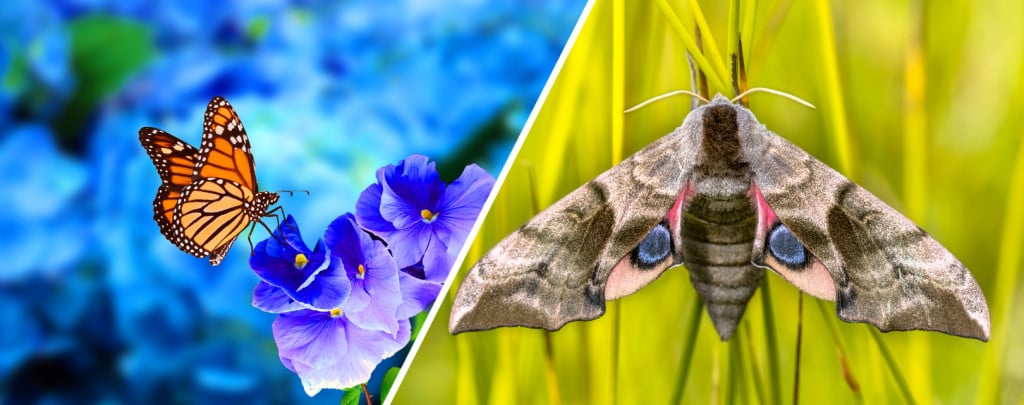
How Do They Develop?
Moths and butterflies both develop through a process known as metamorphosis, which includes four life stages: egg, larva (caterpillar), pupa, and adult. In the egg stage, adult females lay eggs on plants, which then become food for the caterpillars that later hatch. Once the caterpillars hatch, their only job is to eat and gain as much nutrition as they can until they transform into a pupa.
Pupa can be hidden under leaves, buried underground, or suspended from branches depending on the insect species. Once inside, they may take weeks or even months to grow. Slowly and steadily, their cells turn into wings, eyes, legs, antennae, and other butterfly parts. Finally, the pupa transforms into a full-grown adult with legs, eyes, and a body. The transformation from egg to adult is long in relation to its overall lifespan. However, most butterflies and moths live for a week or two, although a few live for several months.
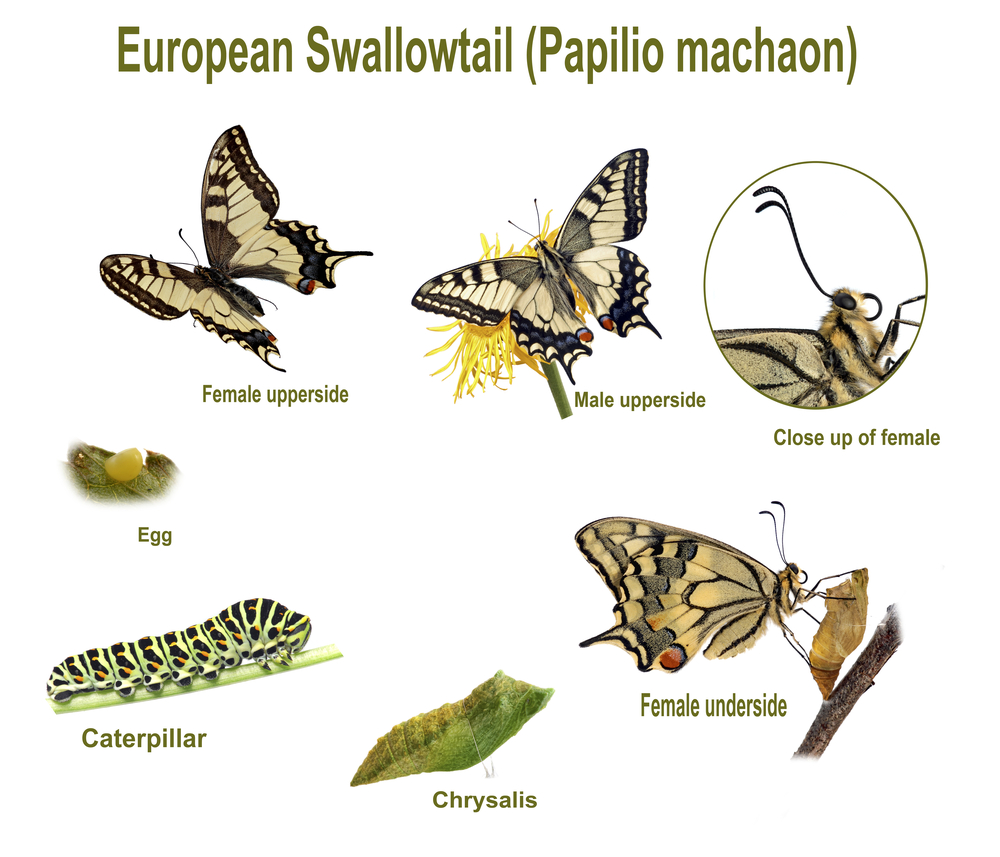
Now, let’s get into the juicy details of how they differ from one another!
Differences Between Butterflies And Moths
Active Hours
The most obvious difference between these two insects is when they are active. Butterflies are diurnal, which means they are active during the day, whereas moths are nocturnal, which means they are active at night. Thus, the next time you see an insect sipping on nectar from a flower on a hot summer afternoon, you can proudly and confidently tell your friends that it’s a butterfly.
Color
The next obvious difference is their color. Butterflies are far more colorful than moths. They have vibrant colors and intricate patterns on their bodies. Moths, however, are usually dull and less vibrant. Butterflies display a diversity of colors, but there are always exceptions. For instance, both the northern Queensland Day moth (Alcides metaurus) and Jacob’s Coat moth (Agarista Agricola) are exceptionally bright for moths.
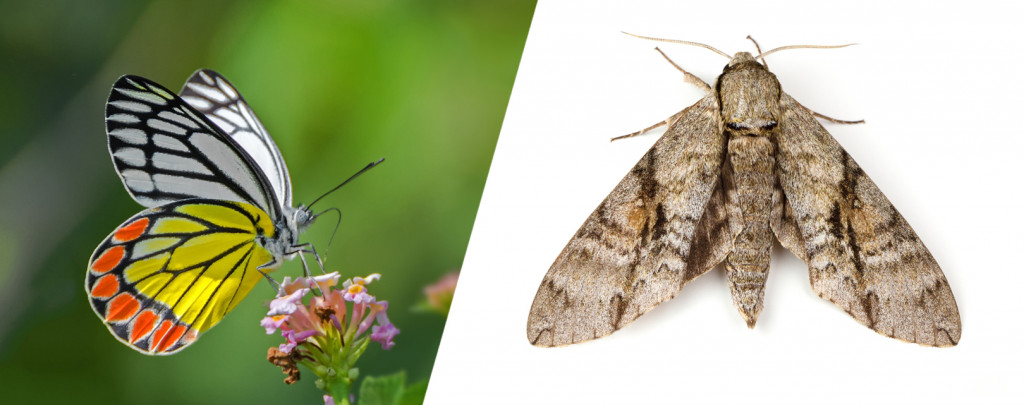
Wings At Rest
When moths rest on plants, they keep their wings wide open. Butterflies, on the other hand, rest with their wings closed. However, at times, you may see butterflies with their wings open while sunbathing. Interesting, just like us humans, butterflies also need their daily dose of vitamin D to maintain their body heat. Hence, on most mornings, when you see them basking in the sun, they’re actually trying to increase their body temperature.
Physical Appearance, Size, And Wing Structure
Moths are plumper and furrier than butterflies, who are generally leaner and smoother. They are also much smaller than butterflies. Moths have a structure called the frenulum, which joins their front and hind wings, while butterflies don’t have this structure.
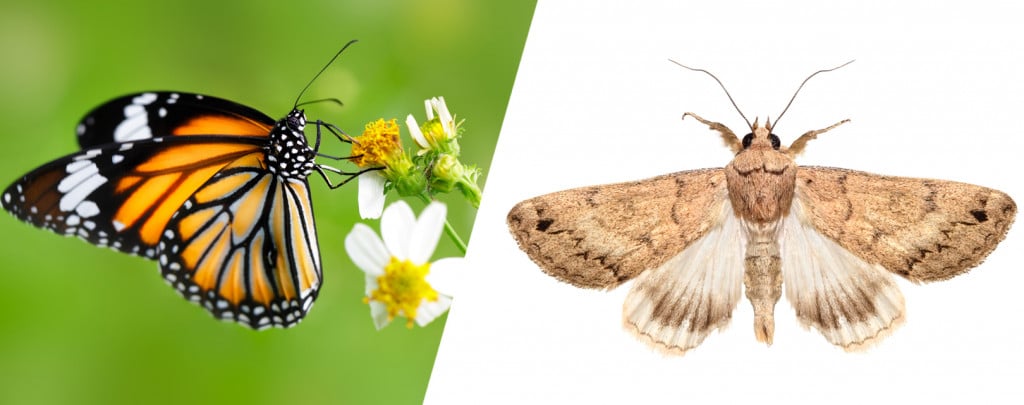
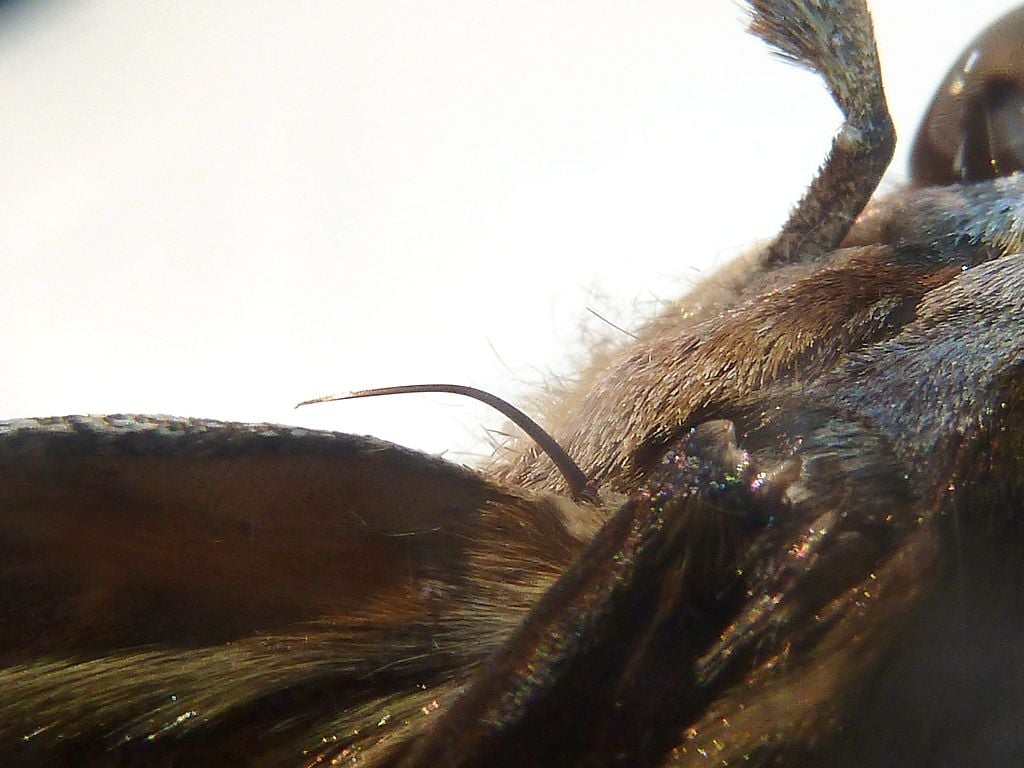
Pupae
Both these insects go through the pupa stage during metamorphosis. In butterflies, the caterpillar spins a pupa made of hardened protein, while moth caterpillars spin a silk cocoon.
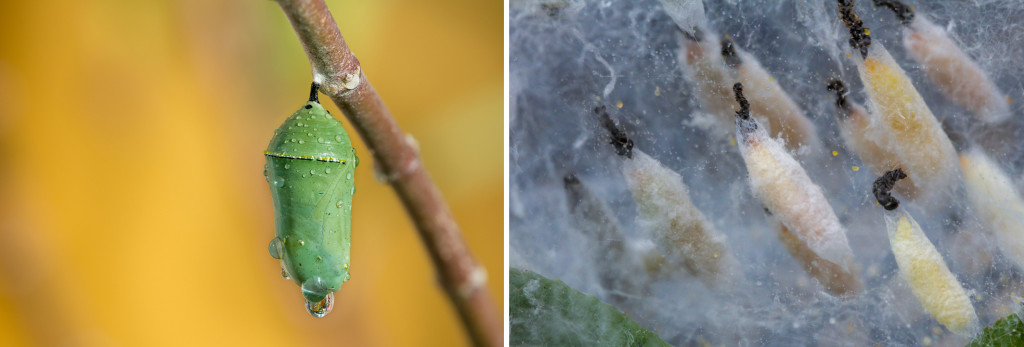
Antennae
The antennae of butterflies are wide, particularly at the tips. They also have a club or hook at the end. Moths, on the other hand, have thread-like and feathery antennae without clubbed tips.
What Role Do These Insects Play?
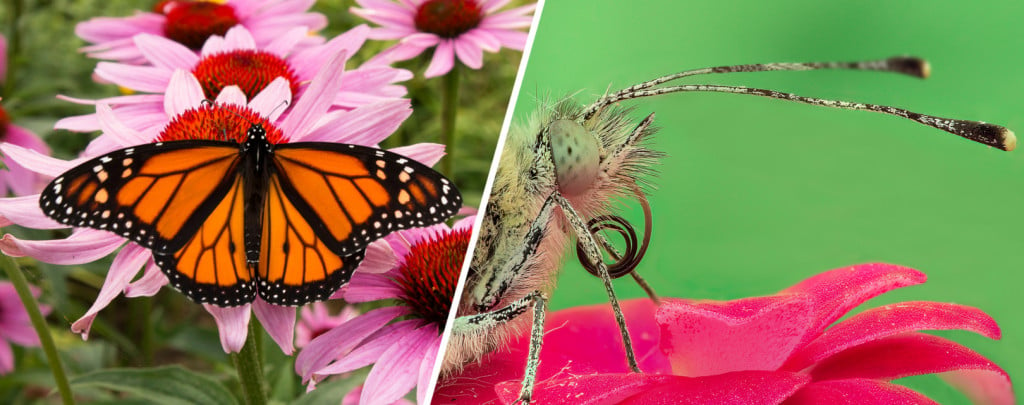
Even though there are many differences between butterflies and moths, both play a crucial role in our ecosystems. For starters, they both have aesthetic value, often representing beauty, peace, and eco-friendliness. Second, they have scientific value and have been model organisms for studies on navigation, genetics, population dynamics, and pest control. Third, they are of great value to our ecosystems as they help in pollination, are prey for insectivorous animals, and are indicators of healthy ecosystems. Fourth, their interesting life cycles make them ideal candidates to use while teaching children about the natural world. Fifth, like other animals and insects, both bring economic income via butterfly gardens and observatories. Last and most importantly, like every other creature on this planet, they too have the right to live!
References (click to expand)
- All about butterflies | Department of Horticulture.
- Butterfly Life Cycle.
- What are the differences between butterflies and moths?.
- 8 Differences Between Butterflies and Moths.
- What’s the difference between a moth and a butterfly? | Digital Collections Programme - naturalhistorymuseum.blog
- Why butterflies and moths are important.

